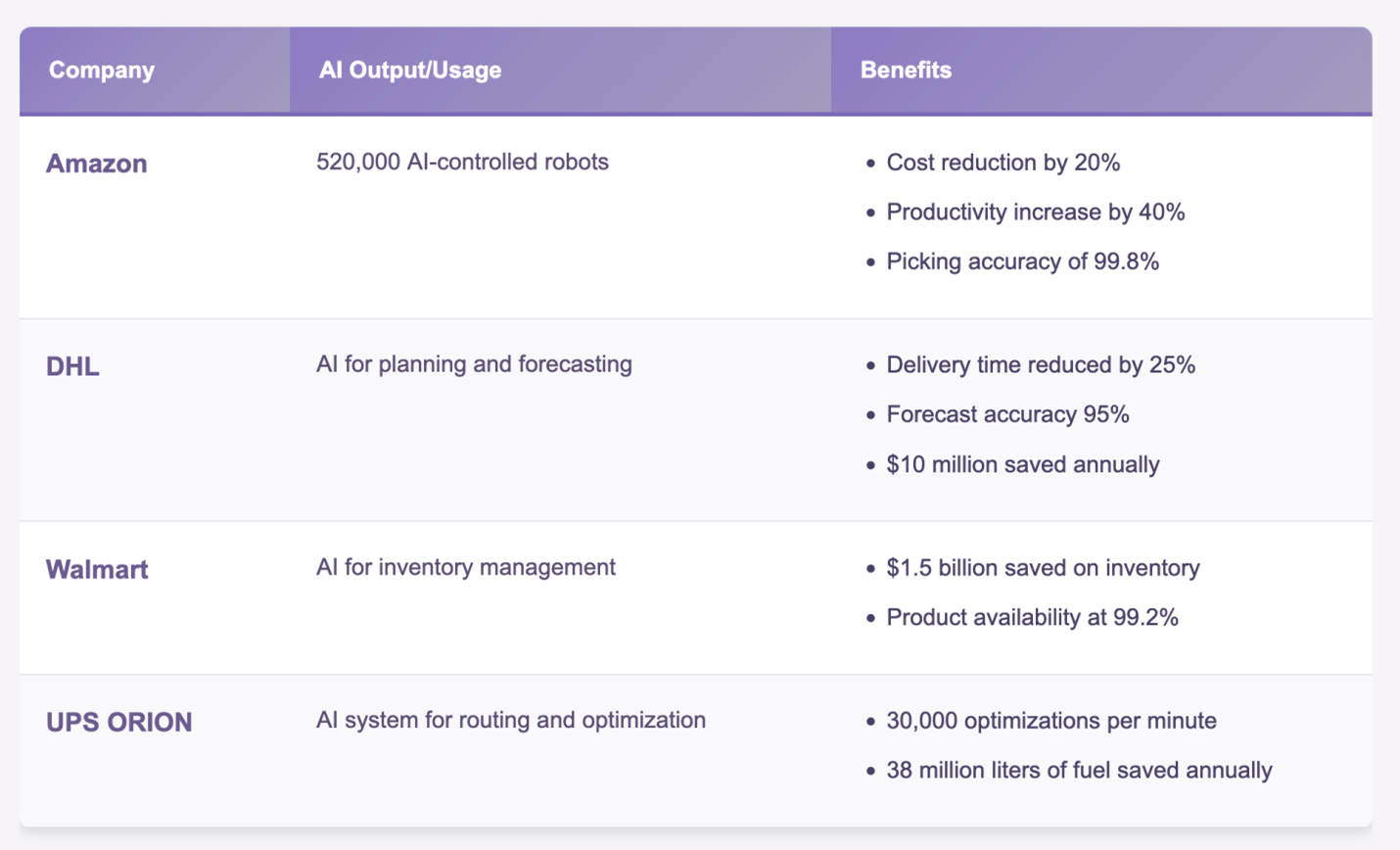Do you have your supply chain under control, or are you just hoping everything runs smoothly? Artificial intelligence helps you see ahead, react faster, and plan smarter. No more last-minute surprises. Read our article to find out how.
Managing a supply chain is no easy task, as anyone who’s dealt with stock shortages, unexpected delays, or demand fluctuations can tell you. But in recent years, businesses have increasingly relied on technologies that help them anticipate and handle these challenges more calmly. One of the most powerful tools among them is artificial intelligence.
Table of Contents
Smarter Planning Based on Data, Not Gut Feeling
How much stock should you order? What will customers be interested in next month? These are not questions worth answering by guesswork. This is where AI can help the most. It can process vast amounts of historical data, track seasonal trends, weather, holidays, and even what’s trending on social media. The result? Far more accurate demand forecasts—no overstock, no stockouts.
At DHL, for example, this led to a 25% reduction in delivery times and 95% accuracy in planning. It significantly reduced unnecessary shipments and costs.
Robots as Colleagues Who Don’t Tire Their Hands or Eyes
Warehouses are no longer just filled with forklifts. Companies like Amazon have turned to AI-powered robots that handle sorting, assembling, and packing goods. And these aren’t newcomers—Amazon alone has deployed over 520,000 of them.
The result? Order processing costs dropped by 20%, and productivity soared by 40%. This frees up your human colleagues to focus on management, communication, or service quality instead of routine tasks.
Resilient Supply Chain
It’s not a question of if something will go wrong in the supply chain, but when. That’s exactly why you need tools that alert you to potential issues early and help you deal with them before they cause serious damage.
1) Risks Under Control Before They Happen
The supply chain faces a wide range of threats, from supplier disruptions to natural disasters. When you rely solely on human judgment, you often react only when it’s already too late. Artificial intelligence helps you monitor thousands of data streams simultaneously and detect early warning signs in time.
For example, the U.S. Defense Logistics Agency uses AI to identify weak points in advance, predict potential disruptions, and propose alternative scenarios. This kind of approach is the foundation of a resilient supply chain that continues to operate even in turbulent times.
2) Flexibility That Saves Time and Money
When something changes, such as a production delay or a sudden surge in demand, you need to react fast. That’s where AI comes in. Companies like Target and Unilever use smart algorithms to monitor inventory levels and needs in real time.
As a result, they can adjust plans so that goods arrive where they’re needed most. This ability to adapt on the fly strengthens supply chain risk management by reducing the impact of unexpected events.
3) Real-Time Supply Chain Mapping—Without Blind Spots
To stay in control, you need to know exactly where your goods come from, how they move, and where potential issues might arise. AI helps you map your supply chain in detail, including your suppliers’ suppliers. This level of visibility allows you to:
- identify critical points,
- build buffers,
- and minimize damage when something goes wrong.
This gives you not only greater flexibility but also the trust of your partners and customers.
Tip: If you’re looking for a practical tool to gain deeper insight into your supply chain down to the sub-supplier level, check it out here.
Supply Chain Mapping: With AI, You No Longer Have to Manage Blind
To plan effectively and manage risks, you need a clear understanding of how your supply chain works—from production all the way to final delivery to the customer. AI gives you an advantage that pen and paper simply can’t match.
Digital Twins Test Your Entire Supply Chain in a Virtual Environment
With the help of artificial intelligence, companies are now creating digital replicas of their supply networks—so-called digital twins. These allow you to easily simulate what would happen if, for example, a supplier fails or transport times increase. This gives you a clear view of where your weak spots are and how to reinforce them.
Brands like Katty Fashion use these models to analyze vulnerabilities and plan production in a way that minimizes waste.
Table: Real-World Benefits of AI in the Supply Chain (Examples from Practice According to Doc Shipper, 2025)
Now It’s Your Turn
Artificial intelligence won’t replace your experience, but it will give you an edge. The sooner you integrate it into your supply chain, the better prepared you’ll be for uncertainties and new challenges. Don’t wait until circumstances force your hand—take the lead voluntarily.


